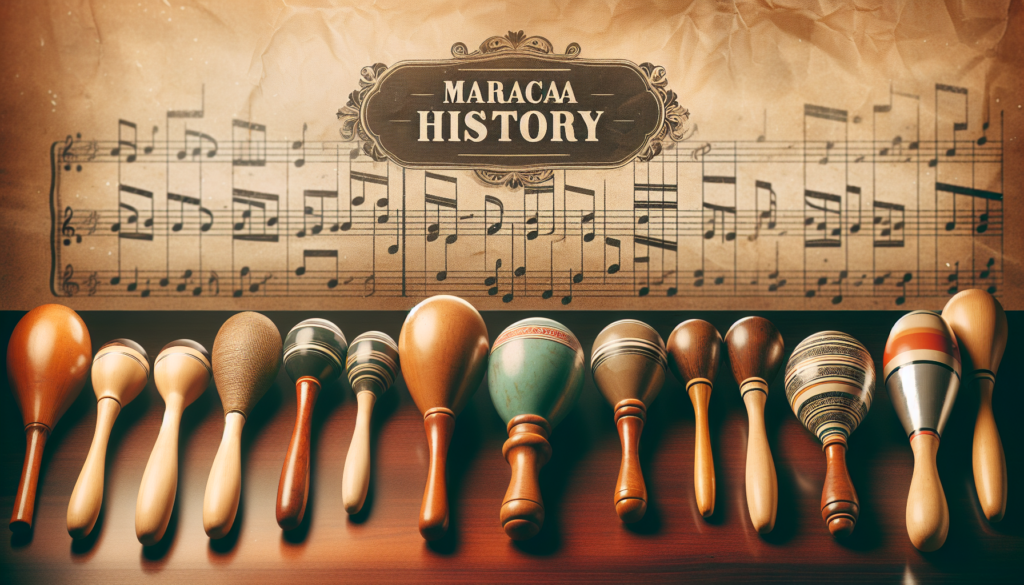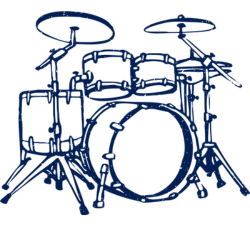
What is the History of Maracas?
The maraca is an ancient instrument of Latin American origin, used in many traditional dances and music styles. It is a percussion instrument consisting of a pair of hollow, egg-shaped containers made of wood, metal, or gourd filled with beads, seeds, or shells that produce a rattling sound when shaken. Maracas have been used in Latin American music for centuries and are now popular around the world.
Origins of the Maraca
The origin of the maraca is unknown, but some scholars believe it originated in pre-Columbian cultures in South America. It is believed that the instrument was first used by the indigenous people of the region, such as the Aztecs and Incas, for ceremonial and religious purposes.
The Maraca Spreads Around the World
In the 16th century, the maraca spread to other parts of the world with the arrival of Spanish and Portuguese explorers. The instrument was adopted by the slaves brought from Africa, who used it to accompany their traditional music and dances. By the 19th century, the maraca had become an important part of Latin American music and culture.
Modern Uses of the Maraca
Today, the maraca is a popular instrument in many genres of music, from traditional Latin American styles to jazz, rock, and pop. It is used in a variety of ways, from solo performance to accompaniment, and is often used in conjunction with other percussion instruments. The maraca is also popular in other parts of the world, such as the Caribbean and parts of Asia.
The Origin of Maracas: Where Did They Come From?
Maracas, also known as rumba shakers, are a traditional percussion instrument used in Latin American music. They are an essential part of the Latin American music tradition, and they are also used in many other genres of music around the world. But what is the origin of these musical instruments? Where did maracas come from and how did they become so popular?
The Origins of Maracas
Maracas originated in South America, specifically in the Caribbean, Central and South American countries. The earliest known maracas date back to the 16th century, when they were used by indigenous people in rituals and ceremonies. The name “maraca” comes from the Taíno language of the Caribbean, which translates to “shell rattle”.
The Evolution of Maracas
Maracas have evolved over the centuries, becoming an essential part of many different musical genres. During the 19th century, maracas were used in Cuban music, and they were also used in Brazilian samba and choro. In the 20th century, maracas began to be used in jazz, rock, and other popular music genres. Today, maracas are used in all sorts of music, from classical to contemporary.
Modern Maracas
Modern maracas are typically made of wood or plastic and filled with small pebbles or seeds. They come in a variety of shapes and sizes, and can be used in a variety of ways. Maracas can be used to add a rhythmic and percussive element to music, and they are often used to accentuate the beat of a song. Maracas are also a great way to add texture and energy to a song.
The Evolution of Maracas Throughout History
Maracas have been an important part of Latin American culture for centuries. They are traditionally used in many Latin American dances, such as the salsa, cumbia, and merengue, and have been an important part of musical culture for generations. The history of the maraca is an interesting one, as it has changed and evolved over the years.
The Origins of Maracas
The origin of maracas is not entirely known, but it is believed that they were first used by indigenous people in South America. The earliest known use of maracas dates back to the early 16th century, when they were used by indigenous people in what is now Peru and Ecuador. It is believed that the maraca was first created by the Arawak people, who used it as a percussion instrument in their religious ceremonies.
Modern Maracas
Modern maracas are made from a variety of materials, including wood, plastic, and metal. They come in a variety of shapes and sizes, and are often decorated with beads, shells, and other decorations. Maracas can be used in a variety of musical styles, including salsa, cumbia, merengue, and other Latin American styles.
Maracas in Popular Culture
Maracas have become an integral part of popular culture, and can be seen in many movies, TV shows, and music videos. Maracas are often used as a prop or to add a unique sound to a scene. They are also commonly used in commercials and other forms of media.
Maracas are an important part of Latin American culture, and their history is an interesting one. From their origins in the 16th century to their use in modern popular culture, maracas have evolved and changed over the years. They remain a popular and important part of Latin American culture, and will continue to be used for generations to come.
How Have Maracas Been Used in Different Cultures?
Maracas are percussion instruments consisting of a hollowed-out gourd filled with beads, beans, or seeds and connected to a handle. They are used for music and dancing in many cultures around the world.
Native American Cultures
The origins of maracas can be traced back to the Native American cultures of the Caribbean and Central America. In these cultures, maracas were used for ceremonial and religious dances and rituals. The instruments were often decorated with colorful feathers and intricate carvings. The sound of the maracas was believed to have spiritual power and was used to evoke energy and emotion during ceremonies.
Afro-Caribbean Cultures
The maracas were also popular in Afro-Caribbean cultures, such as those of Haiti, Cuba, and Puerto Rico. In these cultures, maracas were used for both religious and secular music. Maracas were often used to accompany drumming and other percussion instruments in Afro-Caribbean music. They were also used in traditional dances such as the Merengue and the Salsa.
Latin American Cultures
Maracas have also been used in Latin American cultures, such as those of Mexico and Brazil. In these cultures, maracas were often used for traditional dances such as the Cumbia and the Samba. The instruments were also used for religious ceremonies and celebrations. The sound of the maracas was believed to bring luck and good fortune.
Modern Uses
Today, maracas are still used in many cultures around the world. They are popular in Latin American music, Afro-Caribbean music, and traditional folk music. They are also used in modern pop and rock music, as well as in jazz and salsa. Maracas are a versatile and vibrant instrument that can be used to create a wide range of sounds.
How Has the Design of Maracas Changed Over Time?
Maracas are one of the oldest and most iconic percussion instruments in the world. This Latin American instrument has been around for centuries and is still widely used in traditional music. But what has changed in the design of maracas over the years?
Early Maracas
The earliest maracas were made out of gourds or shells filled with pebbles, stones, or beans. The gourd was often decorated with intricate patterns, and some were even painted. This type of maraca was lightweight and easy to carry, making it popular among travelling musicians.
Modern Maracas
Modern maracas are typically made out of wood, plastic, or metal. They are often filled with metal or plastic beads that create a brighter sound. The handles of these maracas are usually made out of a strong material like wood or metal, making them sturdier and easier to hold. The modern design of maracas also allows for a greater range of sound and tone.
Maracas Today
Today, maracas come in a variety of shapes, sizes, and materials. They are available in both traditional and modern designs, and can be used to create a wide range of sounds. Many modern maracas are even equipped with electronic features, such as adjustable pitch and volume control.
Maracas have evolved over the years, but the basic design has remained the same. The gourd or shell is still used to create the instrument’s body, and the beads are still used to create the sound. Whether you’re playing traditional music or experimenting with new sounds, maracas are a great way to add a unique percussion sound to your music.
What is the Future of Maracas in Popular Music?
Maracas, or rattles, are a percussion instrument that has been used in many different genres of music for centuries. They are a staple of Latin American music, but have also been used in rock, jazz, and folk music. But what is the future of maracas in popular music?
Latin Music
Maracas have been a mainstay of Latin music for centuries, and this is unlikely to change anytime soon. Latin music is continuing to gain popularity around the world, and maracas are a key part of the sound. They provide a unique, rhythmic pulse that is essential to the genre.
Rock Music
Maracas have also been used in rock music for decades, but their use has become less common in recent years. This is likely due to the increased use of electronic instruments and effects in rock music, which can make maracas sound dated. However, there is still a place for maracas in some styles of rock, such as classic rock and psychedelic rock.
Jazz Music
Jazz music is an ever-evolving genre, and maracas have had a place in it for a long time. Maracas are often used to add texture and rhythm to jazz music, and can be heard in many different styles, from bebop to fusion. As jazz continues to evolve, maracas are likely to remain an important part of the sound.
Folk Music
Maracas have long been used in folk music, and this is likely to remain true in the future. Folk music often relies heavily on traditional instruments, and maracas are a perfect addition to this style. They add a unique rhythm and texture to folk music, and can be heard in many different genres, from country to bluegrass.
